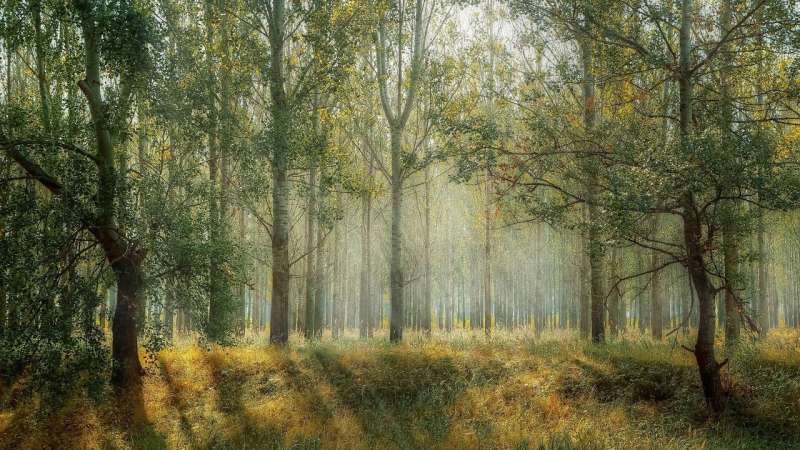How much carbon can the land absorb with more carbon dioxide in the atmosphere?

About 600 petagrams, or 600 billion tons of carbon (the weight of about 100 billion really big elephants), was emitted as carbon dioxide from 1750-2015 through fossil fuel burning, cement production and land-use change. About one-third of this was absorbed by land ecosystems.
Plants pull carbon dioxide out of the atmosphere by converting it into sugars and starches through photosynthesis. Fortunately, plants' appetite for carbon dioxide is healthy: The more carbon dioxide in the air, the faster the plants consume it.
When a terrestrial ecosystem absorbs more carbon from human carbon dioxide emissions than it emits, it is called a carbon sink; otherwise, it is a carbon source. Scientists have found that rising carbon dioxide concentration in the air enhances the land carbon sink, a process known as carbon dioxide fertilization. Quantifying carbon dioxide fertilization is critical for understanding and predicting how climate will affect and be affected by the carbon cycle.
Recently, researchers from 28 institutions in nine countries succeeded in quantifying carbon dioxide fertilization for the past five decades, using simulations from 12 terrestrial ecosystem models and observations from seven field carbon dioxide enrichment experiments.
They found that the sensitivity of northern temperate carbon sink to rising carbon dioxide concentration is linearly related to the site-scale sensitivity across the models. Based on this emergent relationship and field experiment observations as a constraint, the study estimated that for every 100-ppm increase in carbon dioxide in the air (equivalent to about one flea per one liter of water), terrestrial carbon dioxide sink increases by 0.64 billion tons (equivalent to 1.4 billion really big elephants) of carbon per year in the temperate Northern Hemisphere, and 3.5 billion tons of carbon per year globally. The team also revealed that carbon dioxide fertilization is primarily responsible for the observed increase in global terrestrial carbon sink.
"This study reduces uncertainty in the understanding of the carbon dioxide fertilization effect on terrestrial carbon sink," said co-author Dr. Piao Shilong of the College of Urban and Environmental Sciences at Peking University. "The new approach and techniques in this study will be very useful to the scientific community in future research and studies."
"To explain further mechanisms underlying the carbon dioxide fertilization effect, more longer-term field experiments are required, particularly in boreal and tropical ecosystems. Joint effort between experimentalists and modelers is also necessary," said Dr. Liu Yongwen, lead author of the study and a research scientist at the Institute of Tibetan Plateau Research, Chinese Academy of Sciences.
Studies have shown the capacity of terrestrial ecosystems to absorb carbon dioxide is growing. This is good news, since the process can slow the accumulation of carbon dioxide in the air and thus the pace of climate change. Credit should go to carbon dioxide fertilization, the extended growing season for vegetation, and reforestation, all of which pull carbon from the atmosphere. At the same time, however, factors such as fire, heat waves and permafrost thawing—among other increasingly common global warming ills—are changing previous carbon sinks into carbon sources.
More information: Yongwen Liu et al, Field-experiment constraints on the enhancement of the terrestrial carbon sink by CO2 fertilization, Nature Geoscience (2019). DOI: 10.1038/s41561-019-0436-1
Journal information: Nature Geoscience
Provided by Chinese Academy of Sciences





















